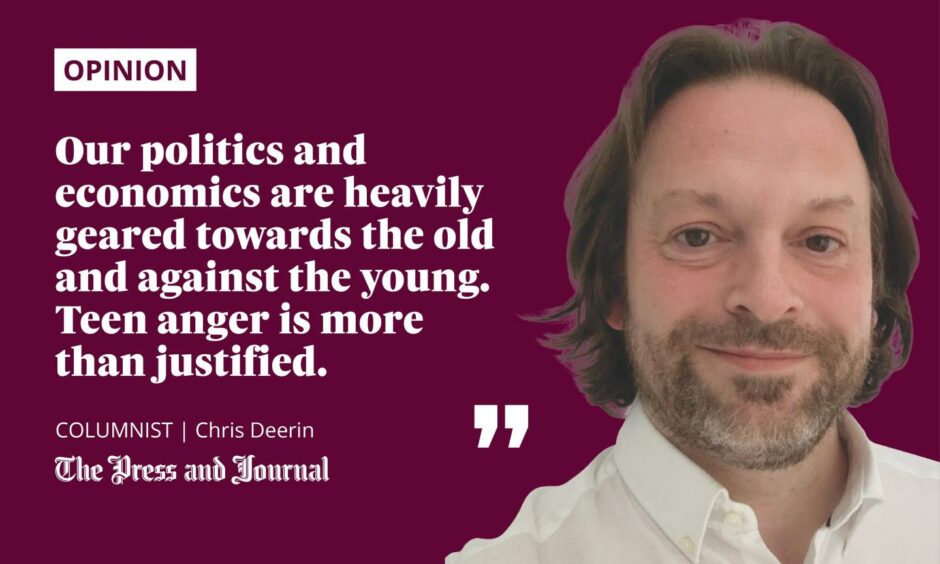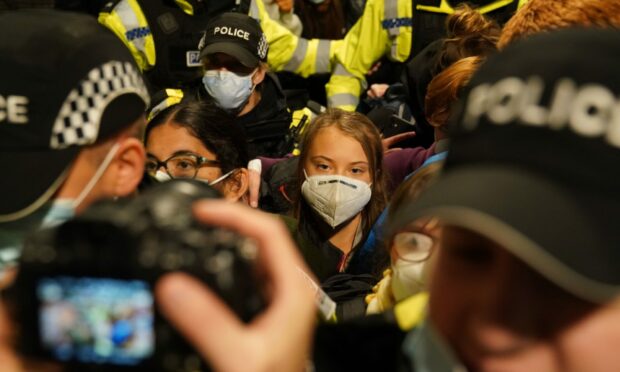How odd Greta Thunberg’s life must be. The 18-year-old environmental campaigner arrived at Glasgow’s Central Station on Saturday evening to a rock star welcome – though in fact it’s hard to think of a celebrity who would be greeted with such hysteria these days.
Chanting crowds and police escorts follow her wherever she goes, as they seem to have done since she first exploded into the public consciousness in 2018 as a sweet-faced-but-stern-looking 15-year-old, hunched outside the Swedish parliament in her thick braid and yellow fisherman’s jacket with a homemade “school strike for climate” sign. Her every utterance is treated as Jedi-like wisdom, and her uncompromising demands for climate action are seen to contrast sharply with the dilatoriness of the vacillating grown-ups who are taking (or not taking) the decisions.

“Sometimes you need to anger some people,” she told the BBC as COP26 got under way. And she has a point – the odds stacked against her generation are formidable, and cover more than just the rising global temperatures that threaten our species’ future way of life. Whether it’s housing, pensions, benefits, public spending in general, or a jobs market that is morphing in strange and unpredictable ways, our politics and economics are heavily geared towards the old and against the young. Teen anger is more than justified.
Populations are ageing
The situation also seems likely to get worse. Populations are ageing across the EU, and will continue to do so. Of its 447.3 million people, those aged up to 14 make up 15.1%, while those aged 65 or over form a 20.6 % share, an increase of three percentage points compared with 2010. The old-age dependency ratio – the number of dependent elderly people compared with the working-age population – increased by 5.7 percentage points during the past decade.
Scotland is at the sharp end of things. Our working-age population is projected barely to grow over the next 25 years, while the 65-74 age group is expected to increase by 17%, and those aged 75 and above by 79%. We also have the lowest fertility rate in the UK. And so a smaller proportion of working people will fund the expanding costs of an increasingly antique population.
The population is ageing, birth rate is falling and rural areas are emptying. What can the EU do about these demographic challenges? pic.twitter.com/zOC1hu2ijg
— European Parliament (@Europarl_EN) April 20, 2021
Inevitably this impacts on public policy. Governments, aware that older people are also more likely to vote, have protected the relatively generous state payments made to pensioners even as the economy has bumbled along a prolonged trough and taxes have risen. Brexit is a thing inflicted by the old upon the young. In Scotland, the same might be said for continued membership of the Union over independence. And as the population ages further, the costs of maintaining this demographic shift will only grow, as will the political pressure to do so.
Where will we find money for social care?
One unavoidable area of rising spending is social care. Both the UK and Scottish governments are wrestling with this most difficult and potentially expensive of issues. It is impossible to identify a fair way of providing such care – ensuring people receive the non-medical support they need at home or in a care home, and protecting their dignity in old age – without significantly increasing the burden on the public purse.
The Feeley Review, set up by Nicola Sturgeon to examine improvements to adult social care, priced an improved workable system at an extra £0.66 billion per year.
Boris Johnson’s administration recently announced a Health and Social Care Levy, through a regressive rise in National Insurance. Those working in the NHS know that this additional resource will not be enough and that much of it is anyway likely to be swallowed by the ever-growing demands of the struggling health system.
In the recent Holyrood election, the party manifestos were notably vague, or even silent, on how the necessary Scottish money might be found to support viable social care.
Tough decisions needed
In a recent paper, my think tank Reform Scotland attempted to bring some realism to the funding debate. To meet the sum arrived at by Feeley requires tough decisions. We suggest an immediate 1p rise be introduced on all income tax levels so that reform can at least begin. In the longer-term, a cross-party group should examine a social insurance model, whether through salary sacrifice, similar to childcare vouchers, or some other model. This would be sustainable and avoid the burden of increasing costs falling fully on the shoulders of future generations.
But it would take the kind of courage and frankness that is not often shown by our leaders, who generally prefer bold rhetoric to bold action. What is clear is that we have not fully considered the consequences of an ageing population, how to pay for it, and how to offer fairness to the young. Greta and her generation will stay angry for many years to come.
Chris Deerin is a leading journalist and commentator who heads independent, non-party think tank Reform Scotland










